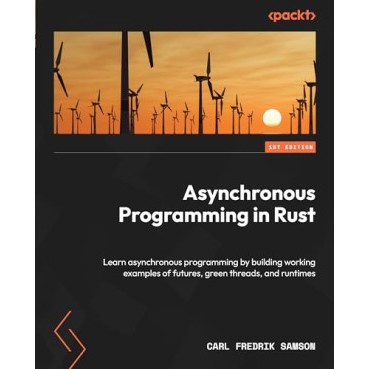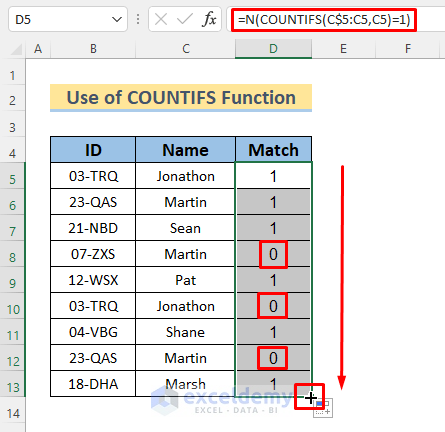5 Key Differences in Rust Async Runtimes

The Rust programming language has gained immense popularity for its focus on safety, performance, and concurrency. With the rise of asynchronous programming paradigms, Rust's async runtimes have become a subject of great interest for developers aiming to build efficient and scalable applications. In this article, we delve into the five key differences among Rust's prominent async runtimes, shedding light on their unique characteristics and use cases.
1. Tokio Runtime: The Asynchronous Workhorse

Tokio is one of the most well-known and widely adopted async runtimes in the Rust ecosystem. It provides a comprehensive set of tools and libraries for building highly concurrent and efficient applications. Here’s a closer look at its key features and advantages:
- Event-Driven Architecture: Tokio employs an event-driven model, utilizing an event loop to manage and process asynchronous tasks. This design allows for efficient handling of multiple concurrent operations, making it ideal for building high-performance network servers, clients, and other I/O-bound applications.
- Non-Blocking I/O: One of the standout features of Tokio is its support for non-blocking I/O operations. By leveraging async I/O primitives and futures, developers can create applications that maximize CPU utilization and minimize latency, ensuring optimal performance.
- Extensive Ecosystem: Tokio boasts an extensive collection of libraries and tools, making it a versatile choice for various application domains. From network protocols and web frameworks to database integrations, Tokio’s ecosystem provides developers with a rich set of options to build feature-rich and performant applications.
- Community Support: As one of the most popular async runtimes, Tokio benefits from a large and active community. This translates into robust documentation, an extensive library of examples and tutorials, and a vibrant ecosystem of third-party libraries and tools, making it easier for developers to get started and find support.
2. Async-std: A Lightweight Alternative

Async-std offers a lightweight and minimalistic approach to asynchronous programming in Rust. It provides a set of core async primitives and tools, making it an excellent choice for developers seeking a simpler and more focused async runtime.
- Minimal Footprint: Async-std is designed with a lean and mean philosophy, focusing on providing essential async capabilities without the overhead of a full-featured runtime. This makes it an attractive option for lightweight applications, embedded systems, or scenarios where resource efficiency is a priority.
- Async-await Syntax: Async-std fully embraces the async-await syntax, making it easier for developers to write asynchronous code. By leveraging the Rust async/await feature, developers can write intuitive and readable code, reducing the cognitive load associated with asynchronous programming.
- Focus on Simplicity: Async-std’s design philosophy emphasizes simplicity and ease of use. It provides a straightforward and intuitive API, making it accessible to developers who are new to async programming or those who prefer a more lightweight and focused approach.
3. Smoltcp: Networking with a Twist
Smoltcp is a unique async runtime tailored specifically for networking applications. While it shares some similarities with other async runtimes, its focus on networking sets it apart.
- Networking-Centric: Smoltcp is designed with a single-minded purpose: to provide efficient and reliable networking capabilities. It offers a comprehensive set of networking primitives and protocols, making it an excellent choice for building network-centric applications, such as routers, firewalls, or network appliances.
- Low-Level Control: Smoltcp provides developers with a high degree of control over networking operations. It offers fine-grained control over packet processing, network stacks, and protocol implementations, allowing developers to build highly optimized and tailored networking solutions.
- Cross-Platform Compatibility: Despite its focus on networking, Smoltcp maintains cross-platform compatibility. It supports a wide range of hardware and operating systems, making it a versatile choice for building networking applications that can run across diverse environments.
4. R2D2: A Connection Pooling Expert
R2D2, or Rust Runtime for Database Connections, is a specialized async runtime designed specifically for managing database connections. It offers a unique set of features tailored to the needs of database-centric applications.
- Connection Pooling: R2D2’s primary strength lies in its connection pooling capabilities. It efficiently manages a pool of database connections, ensuring optimal resource utilization and minimizing the overhead associated with establishing and maintaining connections. This makes it an ideal choice for applications that rely heavily on database interactions.
- Asynchronous Database Access: R2D2 provides a seamless way to perform asynchronous database operations. By integrating with async I/O primitives, it enables developers to write non-blocking database queries, enhancing the overall performance and responsiveness of database-driven applications.
- Error Handling and Resilience: R2D2 places a strong emphasis on error handling and resilience. It provides robust mechanisms for handling database connection failures, timeouts, and other error scenarios, ensuring that applications can gracefully recover from transient issues and maintain high availability.
5. I/O Primitives and Futures: A Building Block Approach

While the previous runtimes offer integrated solutions, Rust also provides a more modular approach through its I/O primitives and futures. This approach allows developers to build custom async runtimes tailored to their specific needs.
- Customizability: By leveraging Rust’s I/O primitives and futures, developers can create async runtimes that are highly customizable. This enables them to choose specific I/O implementations, event loops, and scheduling algorithms, resulting in runtimes that are optimized for their unique application requirements.
- Flexibility: The building block approach offers unparalleled flexibility. Developers can mix and match different I/O primitives, event loops, and scheduling strategies to create async runtimes that best suit their use cases. This flexibility is especially beneficial for complex applications with diverse requirements.
- Learning Curve: While the building block approach provides immense flexibility, it also comes with a steeper learning curve. Developers need a deeper understanding of async programming concepts, I/O primitives, and scheduling algorithms to design and implement custom runtimes. However, for those willing to invest the time and effort, the rewards can be significant.
Conclusion
Rust’s async runtimes offer a diverse range of options for developers building asynchronous applications. From the comprehensive capabilities of Tokio to the specialized strengths of Smoltcp and R2D2, each runtime brings its own unique advantages to the table. The choice of runtime ultimately depends on the specific requirements and use cases of the application. By understanding the key differences among these runtimes, developers can make informed decisions and leverage the full potential of Rust’s async programming ecosystem.
FAQ
Which async runtime is best for network-centric applications?
+For network-centric applications, Smoltcp stands out as the preferred choice. Its networking-centric design and low-level control over networking operations make it an ideal fit for building routers, firewalls, and other network-specific applications.
Can I use multiple async runtimes in the same project?
+While it is technically possible to use multiple async runtimes in the same project, it is generally not recommended. Each async runtime has its own event loop and scheduling mechanisms, which can lead to conflicts and complications. It is best to choose one runtime that aligns with your project’s needs and stick with it.
What are the trade-offs between Tokio and Async-std?
+The trade-off between Tokio and Async-std lies primarily in their scope and focus. Tokio provides a comprehensive set of tools and libraries, making it suitable for building complex applications. Async-std, on the other hand, offers a more lightweight and minimalistic approach, making it a good choice for lightweight applications or scenarios where resource efficiency is a priority.
How does R2D2 handle connection pooling for databases?
+R2D2 employs a connection pooling mechanism to efficiently manage database connections. It maintains a pool of active connections, ensuring that new connections are established only when necessary. This approach minimizes the overhead of connection establishment and maintenance, resulting in optimized database interaction performance.
Can I create my own async runtime in Rust using I/O primitives and futures?
+Absolutely! Rust’s I/O primitives and futures provide a building block approach to async programming, allowing developers to create custom async runtimes. This flexibility enables developers to tailor their runtimes to specific application requirements, making it a powerful option for complex or specialized use cases.



